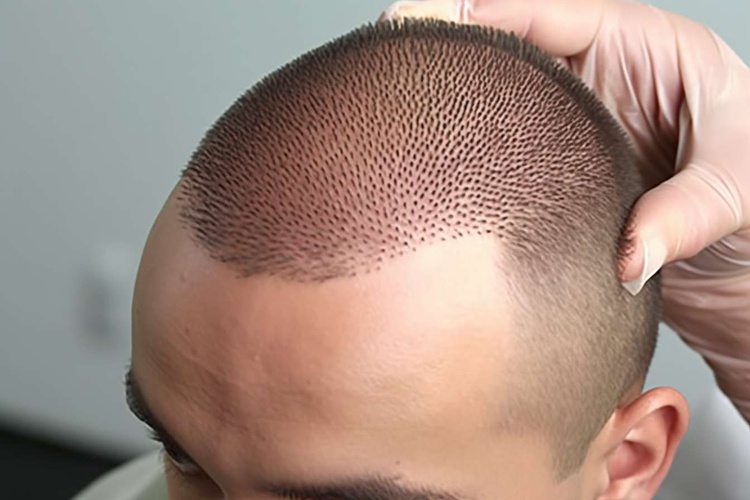Hair Transplantation: New Approaches and Modern Techniques
Hair transplantation has evolved significantly over the past decade, offering individuals experiencing hair loss more refined and effective solutions than ever before. Modern advancements in surgical techniques, technology integration, and patient care protocols have transformed this field from basic hair plugs to sophisticated restoration procedures that deliver natural-looking results with minimal downtime.

What New Approaches Are Being Explored in Hair Transplantation?
Several groundbreaking approaches are reshaping the hair transplantation landscape. Robotic hair transplant systems, such as the ARTAS system, use artificial intelligence and precision robotics to harvest individual follicular units with minimal human error. This technology creates more consistent results while reducing the physical strain on surgeons during lengthy procedures.
Platelet-rich plasma (PRP) therapy has gained significant traction as a complementary treatment. This approach involves extracting the patient’s blood, concentrating the platelets, and injecting the plasma into the scalp to stimulate hair growth and improve transplant success rates. Many practitioners now combine PRP with traditional transplant methods to enhance healing and promote stronger hair growth.
Stem cell therapy represents another frontier in hair restoration. Researchers are investigating how adipose-derived stem cells can regenerate hair follicles and improve transplant outcomes. While still in experimental phases, early studies suggest promising results for patients with advanced hair loss patterns.
Which Modern Trends Are Shaping Hair Restoration Techniques?
The shift toward minimally invasive procedures has become a dominant trend in hair restoration. Direct Hair Implantation (DHI) technique allows surgeons to extract and implant hair follicles simultaneously using specialized Choi implanter pens. This method reduces the time follicles spend outside the body, potentially improving survival rates and creating more natural hairline designs.
Follicular Unit Extraction (FUE) continues to evolve with refined instruments and techniques. Modern FUE procedures use smaller punch tools, typically ranging from 0.6mm to 0.9mm in diameter, which minimize scarring and reduce recovery time. Advanced imaging systems help surgeons visualize follicle angles and directions more accurately, leading to better aesthetic outcomes.
Scalp micropigmentation has emerged as a popular non-surgical alternative or complement to hair transplantation. This technique involves tattooing tiny dots on the scalp to simulate hair follicles, creating the appearance of fuller hair or camouflaging scars from previous procedures.
What Innovations Are Transforming the Field of Hair Transplants?
Technological innovations are revolutionizing every aspect of hair transplantation. 3D imaging and planning software allow surgeons to create detailed treatment plans and show patients predicted results before procedures begin. These tools help set realistic expectations and improve communication between patients and medical teams.
Advanced preservation solutions have extended the viability of harvested follicles. Solutions like HypoThermosol and ATP-enhanced media keep follicles healthy for longer periods outside the body, enabling more complex procedures and potentially improving transplant success rates.
Artificial intelligence is being integrated into various aspects of hair restoration. AI algorithms can analyze hair loss patterns, predict future progression, and assist in designing optimal hairlines for individual patients. Some systems can even automate portions of the follicle harvesting process, reducing procedure times and improving consistency.
Gene therapy research is exploring ways to activate dormant hair follicles and prevent further hair loss. While still in early stages, these investigations could lead to treatments that address hair loss at its genetic roots rather than simply relocating existing hair.
Hair transplantation providers across the country now offer various pricing structures depending on the technique used and the extent of treatment required. Understanding these cost factors can help patients make informed decisions about their hair restoration journey.
| Provider Type | Technique Offered | Cost Range (USD) |
|---|---|---|
| Specialized Hair Clinics | FUE/FUT | $4,000 - $15,000 |
| Robotic Systems (ARTAS) | Robotic FUE | $8,000 - $20,000 |
| Hospital-Based Programs | Multiple Techniques | $6,000 - $18,000 |
| DHI Technique Centers | Direct Hair Implantation | $5,000 - $16,000 |
Prices, rates, or cost estimates mentioned in this article are based on the latest available information but may change over time. Independent research is advised before making financial decisions.
The future of hair transplantation looks increasingly promising as research continues into regenerative medicine approaches. Scientists are investigating ways to clone hair follicles and create unlimited donor hair sources, which could eliminate the constraints of limited donor areas. Additionally, combination therapies that merge surgical techniques with pharmaceutical treatments are showing enhanced results in clinical trials.
These modern approaches and innovations have transformed hair transplantation from a purely surgical procedure into a comprehensive medical specialty. Patients now have access to more options, better outcomes, and improved experiences throughout their hair restoration journey. As technology continues advancing, the field will likely see even more revolutionary changes that make hair transplantation more accessible and effective for diverse patient populations.
This article is for informational purposes only and should not be considered medical advice. Please consult a qualified healthcare professional for personalized guidance and treatment.



